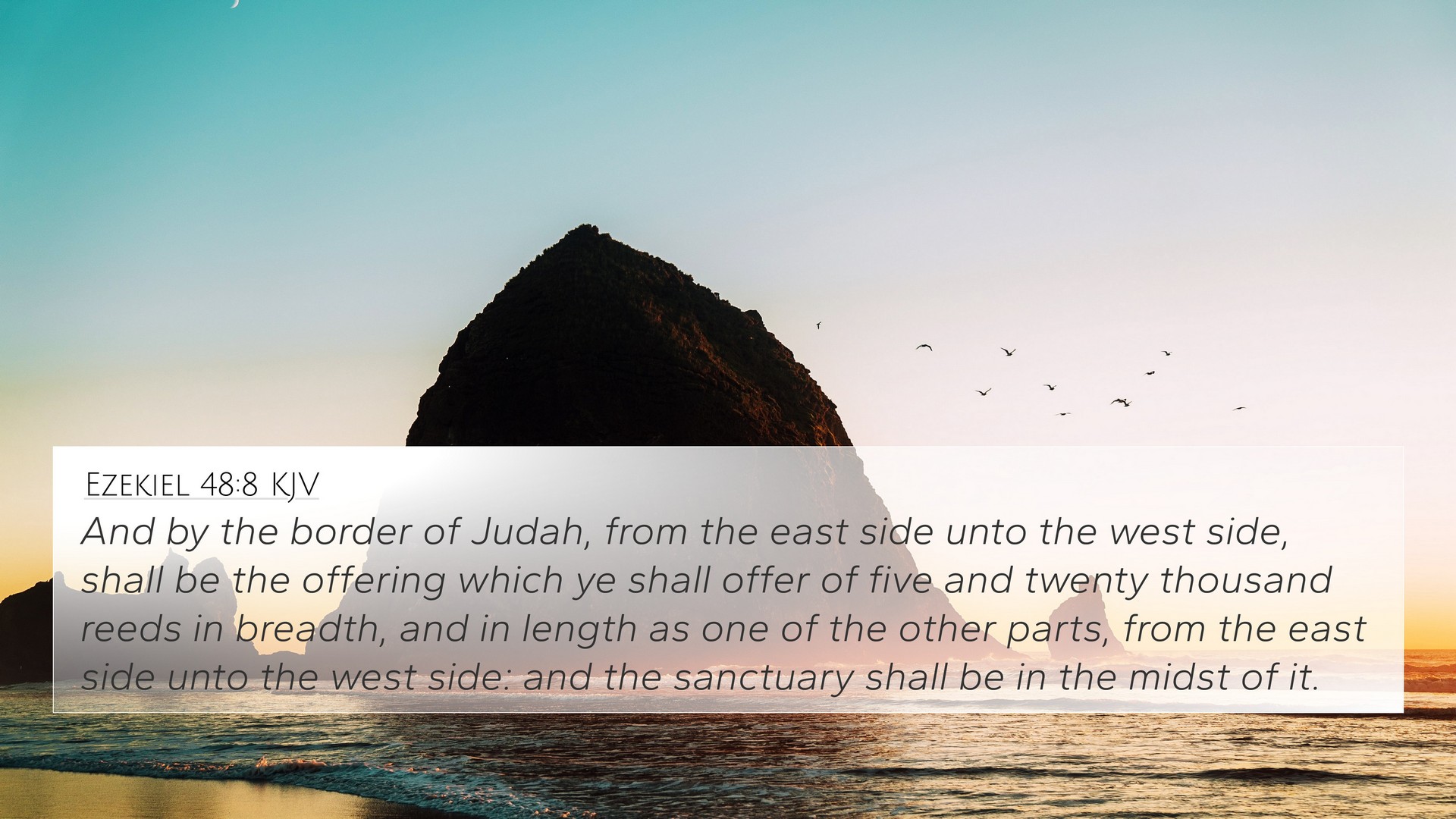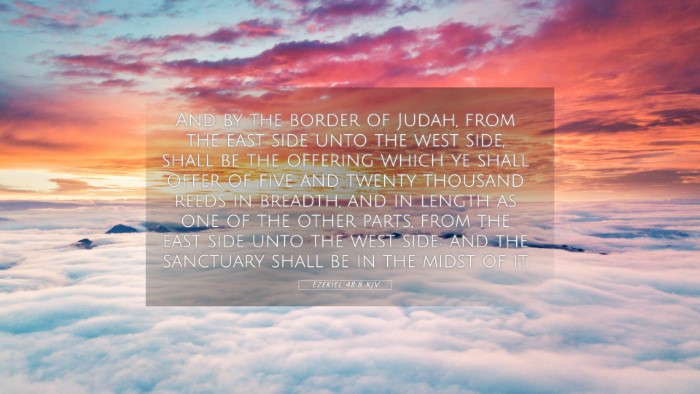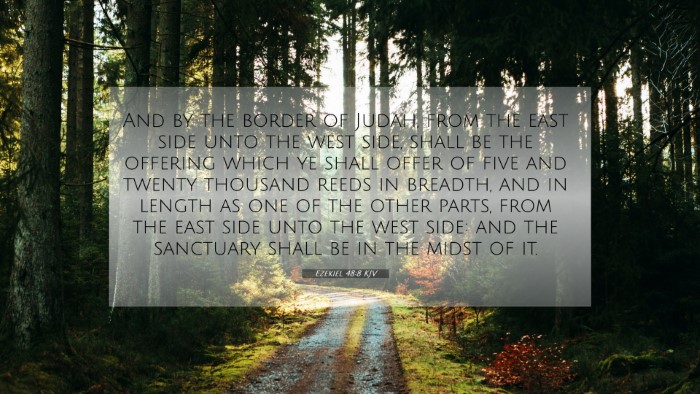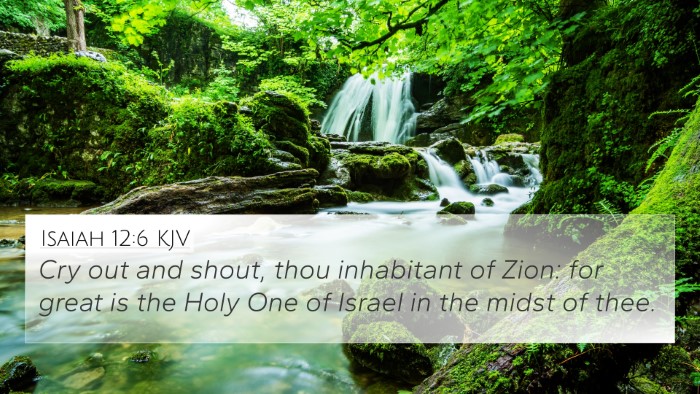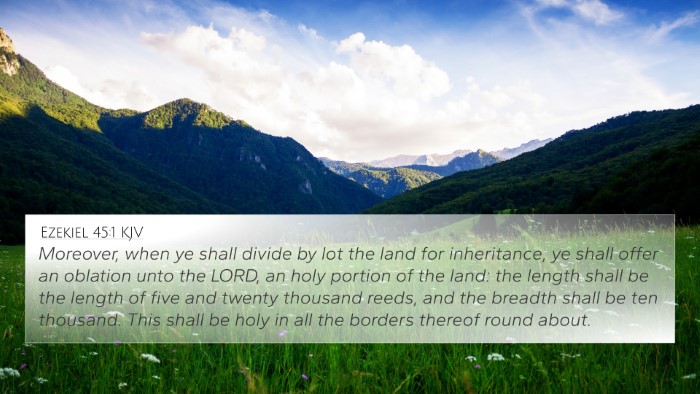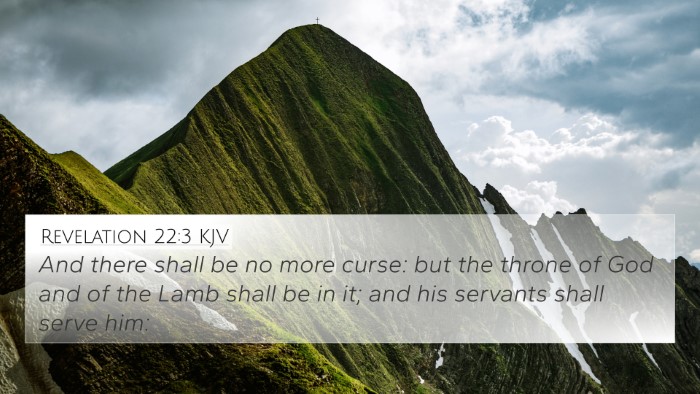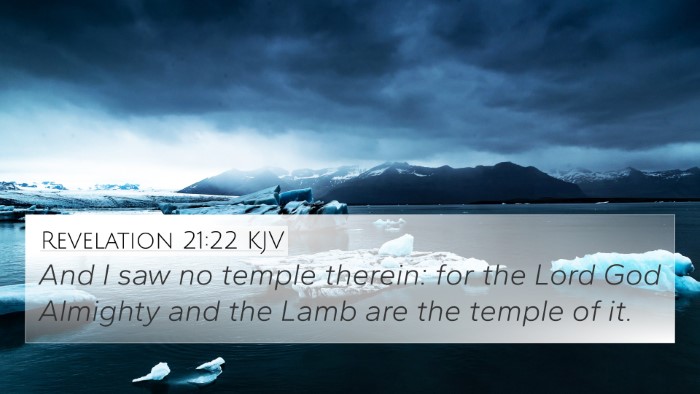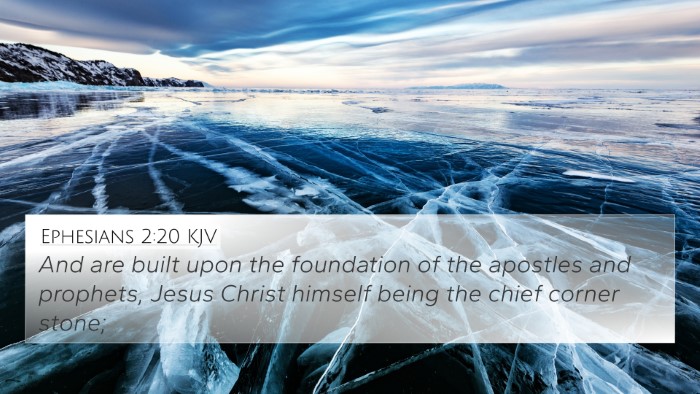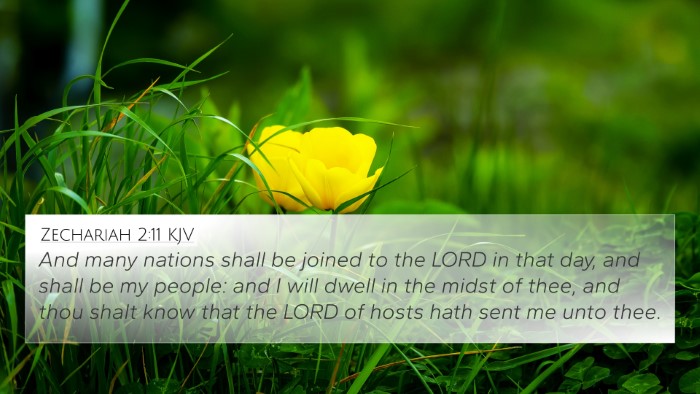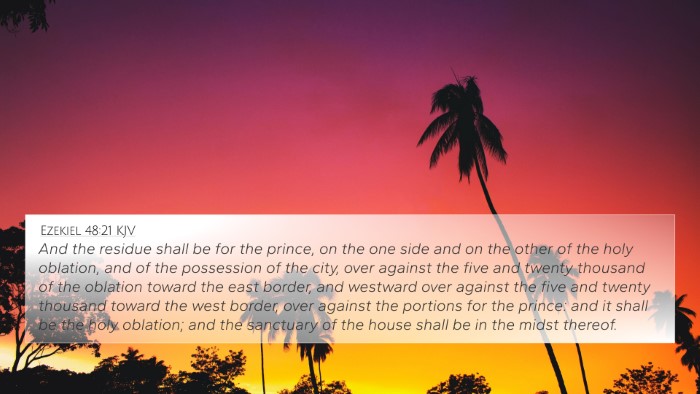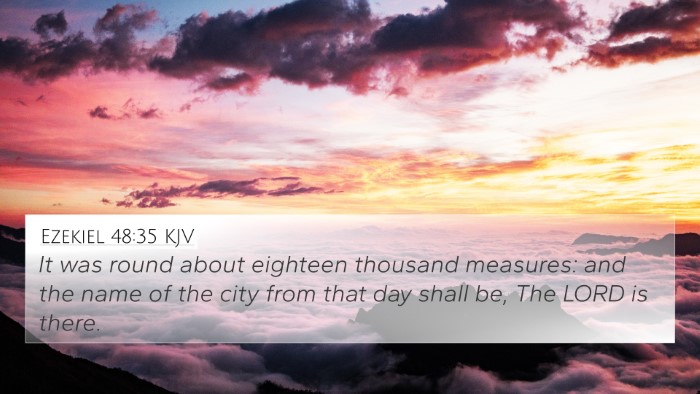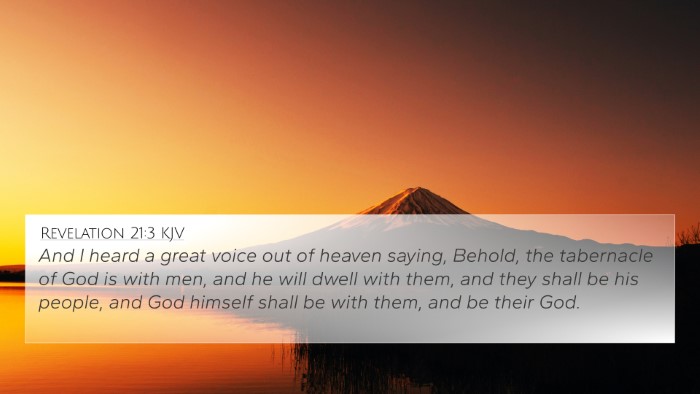Ezekiel 48:8 - Verse Meaning and Insights
Ezekiel 48:8 states: "And by the border of Judah, from the east side unto the west side, shall be the offering which ye shall offer of five and twenty thousand reeds in breadth, and in length as one of the other parts of the holy oblation." This verse is located at the conclusion of Ezekiel's visions, focusing on the division of the land among the tribes of Israel, specifically the tribe of Judah’s portion.
Context and Historical Background
The Book of Ezekiel primarily presents the prophecies of Ezekiel during the Babylonian exile, addressing the restoration of Israel and the future Temple. In this context, the allocation of land signifies God's promise to His people and the restoration of their identity.
Commentary Insights
-
Matthew Henry:
Henry emphasizes the importance of the division of land as a representation of God's assurances to His people. The measurements given indicate a structured and divinely ordained layout for the nation of Israel, recalling their covenant relationship with God.
-
Albert Barnes:
Barnes notes that the prescribed dimensions reflect the sacredness of the land and highlight offerings made to God. The size and scope imply a significant blessing to the tribe of Judah, reiterating God's providence and care for His chosen people.
-
Adam Clarke:
Clarke interprets the specifics of the measurements as literal and symbolic, pointing out that precise dimensions underscore the holiness of God's presence among His people. He suggests that the land is a gift from God, an indication of His favor upon the faithful remnant in Israel.
Thematic Connections and Cross-References
Ezekiel 48:8 can be linked to several significant cross-references throughout the Bible that share a common theme of land allocation, divine promise, and God's covenant with Israel:
- Joshua 14:1-5: Discusses the division of the land among the tribes of Israel, reaffirming God's promise.
- Numbers 34:1-12: Provides the boundaries and allocations of the Promised Land to the Israelites.
- Isaiah 65:21-22: Promises a future of peace and stability in the restored land.
- Ezekiel 36:24-28: Offers a promise of restoration and renewal, emphasizing God's work in the hearts of His people.
- Revelation 21:10-12: Portrays the new Jerusalem and the fulfillment of God’s ultimate plan for His people.
- Deuteronomy 12:1-14: Instructs on worshiping in the designated land, linking land and worship.
- Jeremiah 31:5: Relates to rebuilding and planting in the land, reflecting hope and restoration.
Understanding Through Comparative Bible Verse Analysis
The study of Ezekiel 48:8 through comparative analysis provides deeper insights into how different Biblical texts communicate God's unchanging purpose:
- By examining the connection between Ezekiel and Joshua, one can understand the continuity of God's promises through generations.
- Linking Ezekiel to Jeremiah shows the hope embedded in God's promises and Israel's eventual restoration.
- Analyzing the thematic elements in Ezekiel and Revelation reveals the fulfillment of God's kingdom and the re-establishment of His presence.
Using Bible Cross-References Effectively
For comprehensive Bible study, utilizing tools for Bible cross-referencing can greatly enhance one’s understanding:
- A Bible concordance can help locate terms and themes quickly.
- A Bible cross-reference guide provides structured insights across various scriptures.
- Engaging in cross-reference Bible study can uncover deeper meanings and truths.
Conclusion
The verse Ezekiel 48:8 not only illustrates the geographical and spiritual restoration of Israel but serves as a reminder of God's faithfulness to His people. By connecting this verse to others through cross-references, readers can deepen their understanding of scripture and its cohesive message about divine covenant and restoration.
